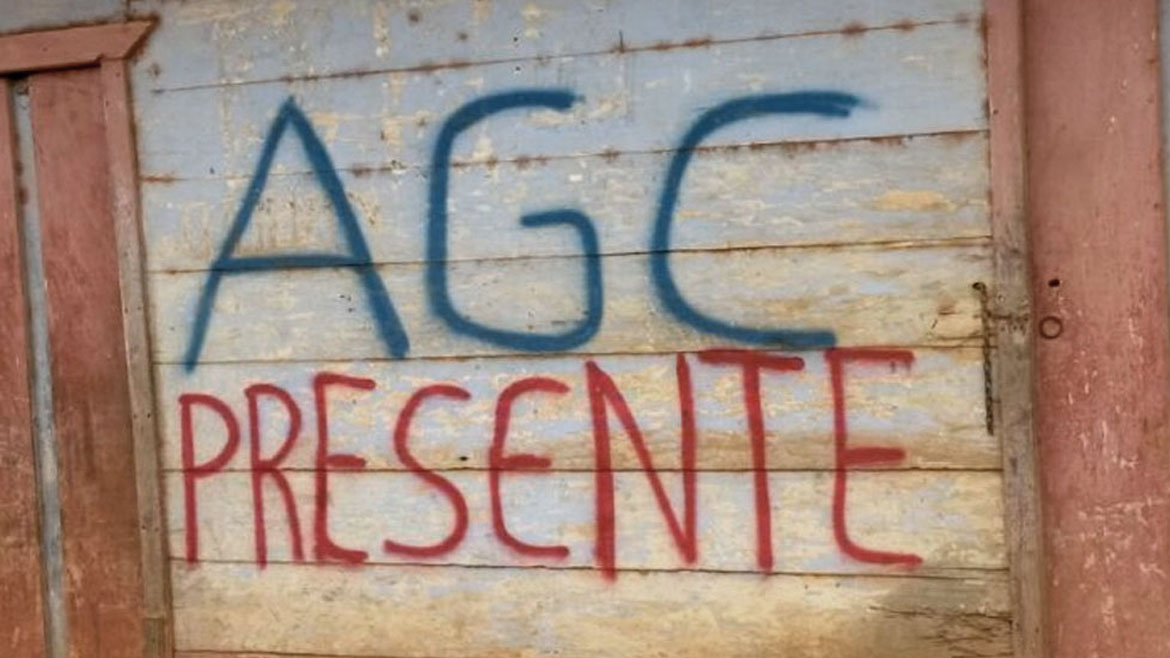Colombia’s illegal armed groups are increasingly moving their violence from the countryside to the country’s cities, according to a leading think tank on the armed conflict.
In its annual report on illegal armed group, think tank Indepaz said that Colombia’s cities are increasingly becoming a battleground for guerrillas and paramilitary groups that have long maintained in the countryside.
The urbanization of the armed conflict would be due to the increasingly common practice by paramilitary organization AGC and groups of drug traffickers who returned to Colombia after serving a prison sentence in the United States.
The approximately two dozen groups that were formed by former members of the now-defunct guerrilla organization FARC after a 2016 peace deal have largely been absorbed by three FARC dissident organizations.
Clashes between rival groups have diminished the territorial control of smaller groups that have either been expelled from their regions or have joined one of the larger groups.
Paramilitary hegemony
Paramilitary groups that reorganized after the partial demobilization of the AUC between 2003 and 2008 have since consolidated control over 216 of Colombia’s approximately 1,100 municipalities, according to Indepaz.
The paramilitaries are intermittently active another 232 municipalities and allegedly expanding their presence in another 79 municipalities.
Indepaz first registered the current paramilitary expansion in 2020 after a period that saw a gradual reduction in the territorial control of the AUC successor groups.
The AGC is by far the largest or these groups formed by dissident former AUC members.
These paramilitaries are permanently present in 131 municipalities, mainly in the northwest of Colombia from where the group originates.
Paramilitary activity between 2017 and 2021
The ELN’s expansion drift
The ELN, Colombia’s longest-living guerrilla organization, was able to consolidate control over 91 municipalities and appears to be in the process to become the dominant illegal armed group in another 71.
This group’s territorial control has historically been strong in the periphery of Colombia’s national territory.
The ELN was occasionally present in another 152 municipalities outside their traditional strongholds, however, possibly because of military offensive by State forces to confine the guerrillas to the border regions.
ELN activity between 2017 and 2021
The reuniting of former FARC guerrillas
FARC dissident groups have consolidated control over 60 municipalities, mainly in the south of Colombia and along the Venezuelan border in the east.
Another 36 municipalities are on the verge of falling under the control of the groups that were formed by members of what was Colombia’s largest guerrilla organization until five years ago.
The so-called Southeastern Bloc, which rejected the peace process since the beginning, was the dominant force in the southwest of Colombia last year.
Their allies of the Western Coordinating Command (CCO) dominate former FARC territory in the southwest.
The Segunda Marquetalia of the FARC’s former political leader, “Ivan Marquez,” has barely been able to expand its territory amid persistent tensions with the other guerrilla groups.
FARC dissident activity between 2017 and 2021
The lost war
The Indepaz report confirms those of other conflict monitoring NGO’s that noted that former President Ivan Duque’s attempts to overpower the guerrillas failed to increase State control over Colombia.
The far-right former president made no visible effort to reduce the territorial control of the AGC and other paramilitary groups that historically have refused to challenge state power.
Duque’s successor, President Gustavo Petro, has embarked on a policy that seeks to negotiate the demobilization and disarmament of the illegal armed groups in order to allow an expansion of state control over his country’s national territory and population.
How Duque condemned Colombia to a new cycle of violence
Taking the war to people’s doorstep
The apparent urbanization of the illegal armed conflict and the increased presence of paramilitary groups in the cities poses a major threat to Petro’s peace policy.
Public support for the president’s negotiations with illegal armed groups and organized crime groups alike could suffer if turf wars between rival organizations surge urban violence during the talks.
A similar trend occurred in the late 1990’s when the AUC sought to violently assume control over cities while former President Andres Pastrana sought to negotiate peace with the FARC, which ultimately failed.



